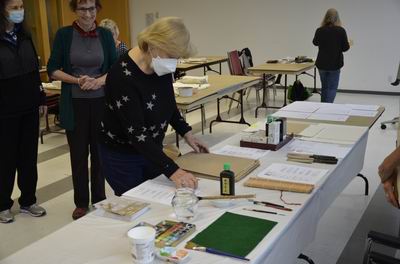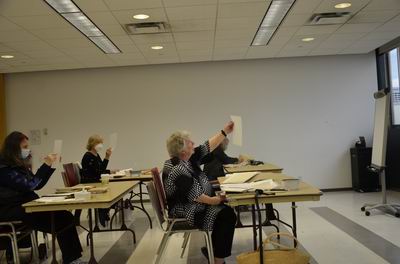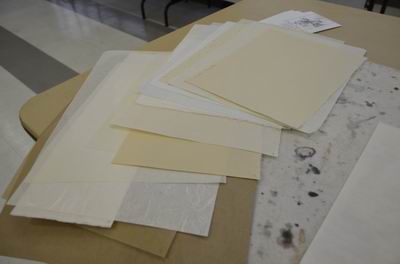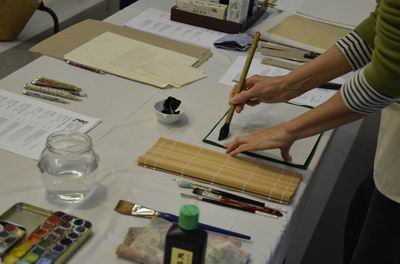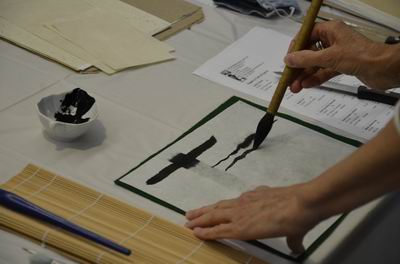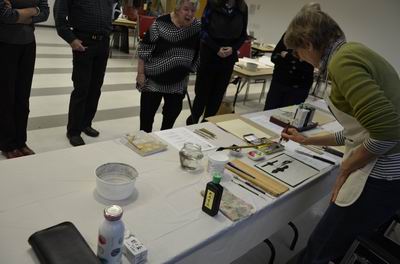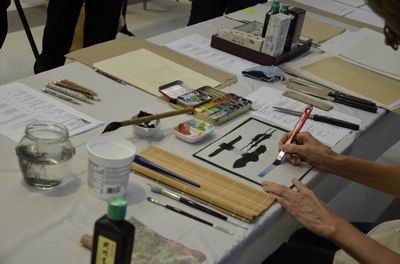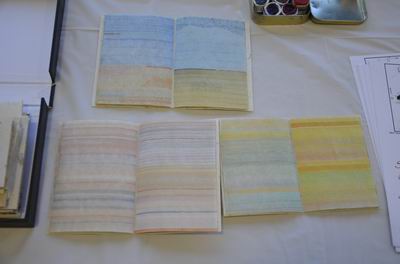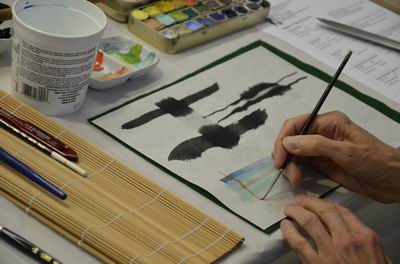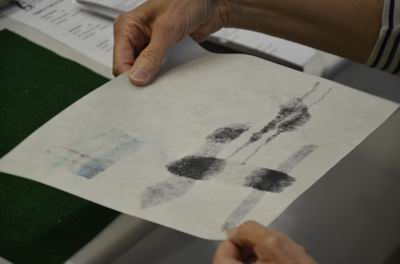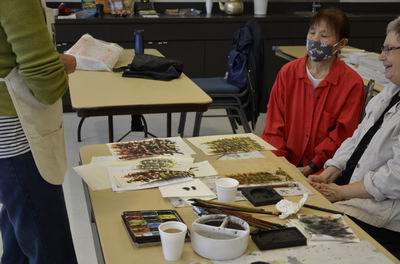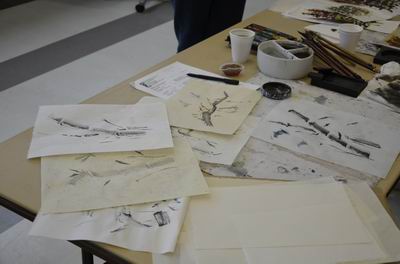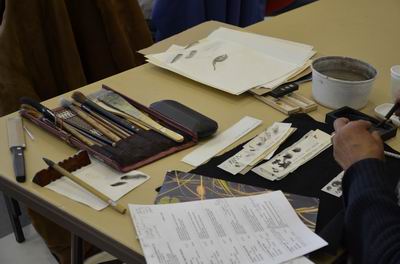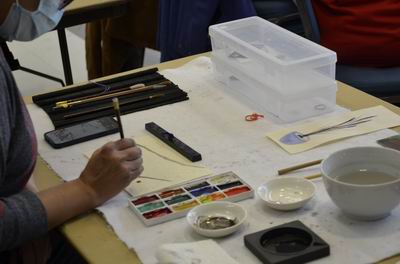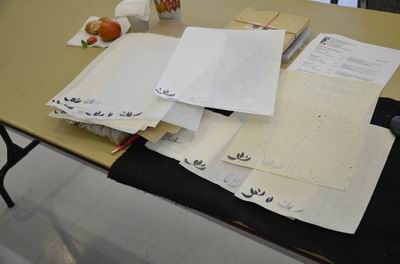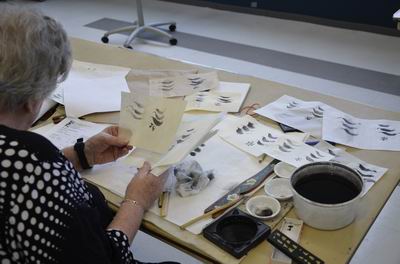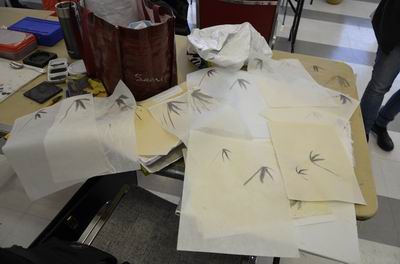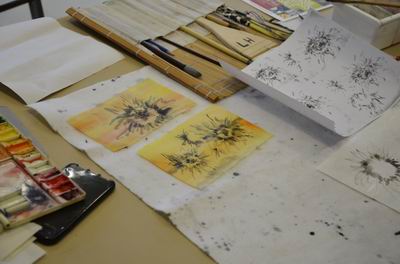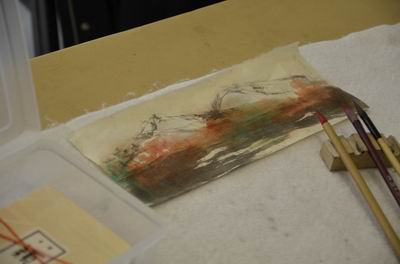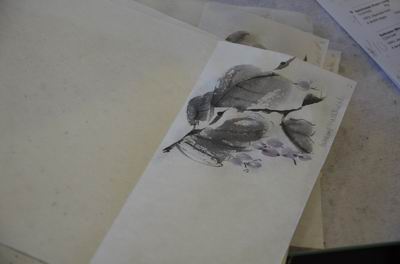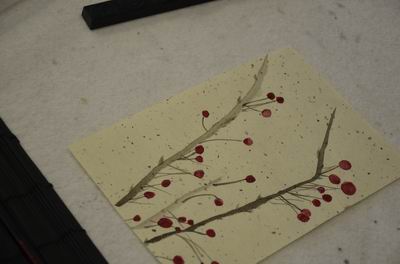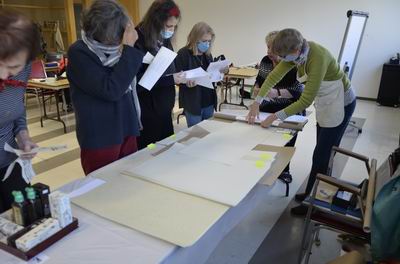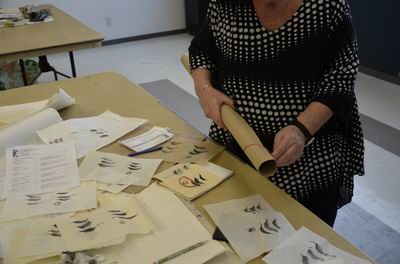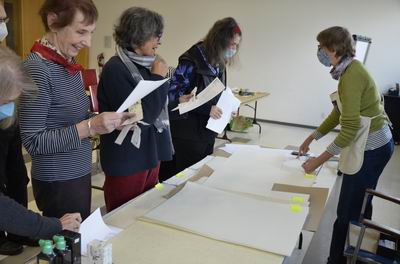Washi Paper Testing with Sigrid Blohm - October 15th, 2022
Washi paper, commonly called Japanese rice paper, is the finest paper you can paint on. But it is also expensive. So it is a good idea to know what paper you want before buying. Sigrid Blohm from the Japanese Paper Place helped artists to make their best selection with a washi paper testing workshop. Artists began by picking up a package of 16 papers.
Sigrid Blohm described each paper including the brush marks artists would see on some of the hand made paper.
Artists held these papers in the light to see the brush marks themselves.
A wide variety of washi paper was presented. Each paper was numbered and an accompanying sheet provided details of that particular paper, as well as its Japanese name. Most papers were hand made and a few machine made. Some absorbed more paint and others absorbed less.
The concept of the washi testing workshop was to find what type of washi paper worked best for you. Each artist is different. Sigrid Blohm suggested that artists paint simple lines and subjects with a variety of brushes.
Black lines in various sizes and types, some straight and others with curves gave the artists an idea of how to start testing the paper.
Using colour paints is something to test for too.
Colour paint from Beam paints was used by Sigrid Blohm, which is similar to a gouache paint.
Sigrid Blohm makes books with stripes of colour paint on washi paper.
Paint intersecting lines on the paper too.
Once you are finished, turn the paper over. Sometimes the image created on the reverse side is more interesting than the one you consciously created.
The artists began painting their own images such as a colourful tree with Sigrid Blohm helping with questions.
Each artist worked on his or her own image keeping in mind a suggestion to use a single image so that a comparison of papers could easily be made. Washi paper is smooth on one side and rougher on the other; which side you use is a personal choice.
Some artists cut their paper into smaller strips for quick testing using small images.
Other artists chose a simple image like a flower pot with a few stems.
These petals let an artist see the different effect of the papers easily.
A repeating pattern is another way to quickly find the paper that will work for you.
Identical leaves will show the differences in types of paper.
Some artists tried an approach with colour.
Sumi-e ink and colour together showed how different papers reacted.
This more complex painting was helpful to an artist wanting to see how a particular paper would render a subject meaningful to her.
One of the papers had decorative elements that enhanced this plant.
At the end of the workshop, artists could purchase sheets of the washi paper that interested them from Sigrid Blohm.
There is nothing more rewarding than finding just the right paper that works for you.
Sigrid Blohm helped many artists resolve a difficult problem: how to discover the paper that suits them best.
You can learn more about the Japanese Paper Place and the washi paper used by Sigrid Blohm in the links section.
